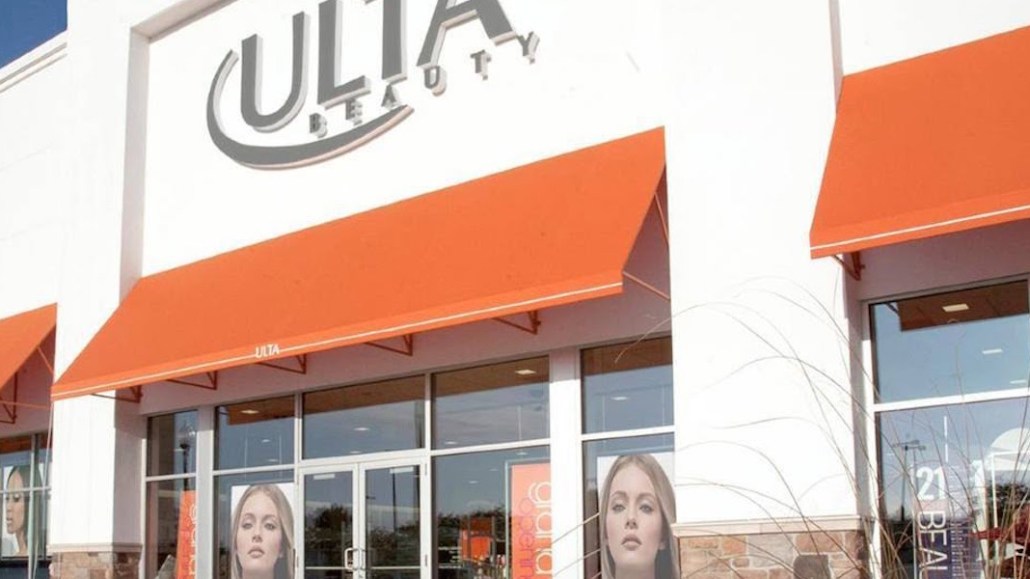

In the last four years, Ulta has successfully repositioned itself — from the equivalent of a suburban drugstore retailer to a beauty powerhouse.
Though Ulta has been around for 25 years, it only recently became a viable competitor of Sephora. In 2015, it finally outpaced the LVMH-owned company in both total number of stores and sales — ultimately taking over 27 percent of the beauty market — to become the largest beauty retailer in the U.S. In the last fiscal quarter alone, Ulta reported a 22 percent increase in sales.
Ulta has been on a consistent upward trajectory since CEO Mary Dillon took the helm in 2013. Under Dillon, Ulta has cultivated a sharper eye for product selection across its inventory of 20,000 items and a smarter approach to opening stores in high-foot-traffic regions. (It opened its thousandth store this month.)
Even more vital to the company’s success, Dillon’s vision has focused on a refreshed digital strategy and a reorganization of Ulta’s previously stale loyalty program, said Linh Peters, Ulta’s senior director of loyalty marketing.
“Loyalty is not a discount or promotion, it’s a strategic driver of shared wallet and sustained approach,” Peters said, speaking at the eTail East conference in Boston on Wednesday. “I can’t emphasize enough how important it is to keep your program simple for the guest to understand.”
Though loyalty programs are ubiquitous in the beauty realm, Peters said Ulta has set itself apart by deriving 90 percent of its total sales directly from its 25 million loyalty members. A key factor to the success of this program is its focus on simplicity and savvy acquisition, which primarily occurs during in-store interactions with sales associates, she said.
Ulta also overhauled the structure of its loyalty program to be more enticing for shoppers. It retained its points program, but instead of giving out products for reaching certain values, it now lets consumers do the choosing by giving them store credit. (It paired this with an optional credit card that offers double points, granting consumers rewards more quickly.)
The primary draw is that — since higher-end brands like Urban Decay rarely, if ever, discount — shoppers can use their points toward these products, Peters said.
Beyond Urban Decay, which is one of its top-selling brands, Ulta has aggressively courted higher-end brand partners (what the company calls “prestige brands”), including MAC Cosmetics; Ulta’s partnership with the brand launched in June.
It helps that Ulta has amassed the insights and data from 25 million people — it can share that information directly with its partner brands.
“Brands are at our doorstep, wanting to understand who is shopping their brands and also consumer behavior,” she said. “We have a ton of data, and we’re able to tell them what the guest is doing within our four walls. We’re also online with their brand. It’s not something that a lot of retailers can give.”
Peters said Ulta has a “small, but mighty” insights and analytics team that culls through extensive amounts of data and extracts trends to inform strategies. As a result, brands feel comfortable working with Ulta to experiment with new products or marketing approaches. The Ulta team meets regularly with its partner brands to collaboratively discuss ways to improve business on both side.
Peters said this insight into consumer behavior also impacts how Ulta approaches discounting. Rather than adhering to its previous broad discount model — for example, giving 20 percent off the entire store — the company is directly targeting loyalty members with personalized discounts based on their shopping history.
“There’s a lot of information we have to work with to deliver that targeted offer to the right person,” she said. “The majority of our promotions and engagement with guests has transitioned to the loyalty program, so now we’re creating even more value in the currency around points and the ability to accrue them toward other products.”
Peters said, from a brick-and-mortar perspective, Ulta has found success in its “all things beauty, all in one place” approach, which includes not only beauty products, but also makeup consultations and in-store salon services, like haircuts and brow shaping.
By and large, Ulta has also managed to remain relatively unscathed from the “retail apocalypse,” she said, in large part because of its continued dedication to strip mall stores, where its neighbors including Nordstrom Rack, T.J.Maxx and HomeGoods have also managed to avoid the pitfalls of mall brands and luxury retailers.
“We can take a brand, take a promotion, take a business objective and really refine what we want to do,” she said. “We’re always testing and trying different things.”
More in Marketing

The anatomy of an agency chief client officer
Several major agencies have moved to appoint chief client officers to their top cohorts lately.

How marketers rank this year’s generative AI image, video tools
Digiday’s 2025 agency generative AI report card explores the winners and losers of the generative AI landscape.

In memoriam: Brands we lost in 2025
Digiday Media staff rounded up some of the most notable brand names we lost in 2025, like Joann and Rite Aid.








